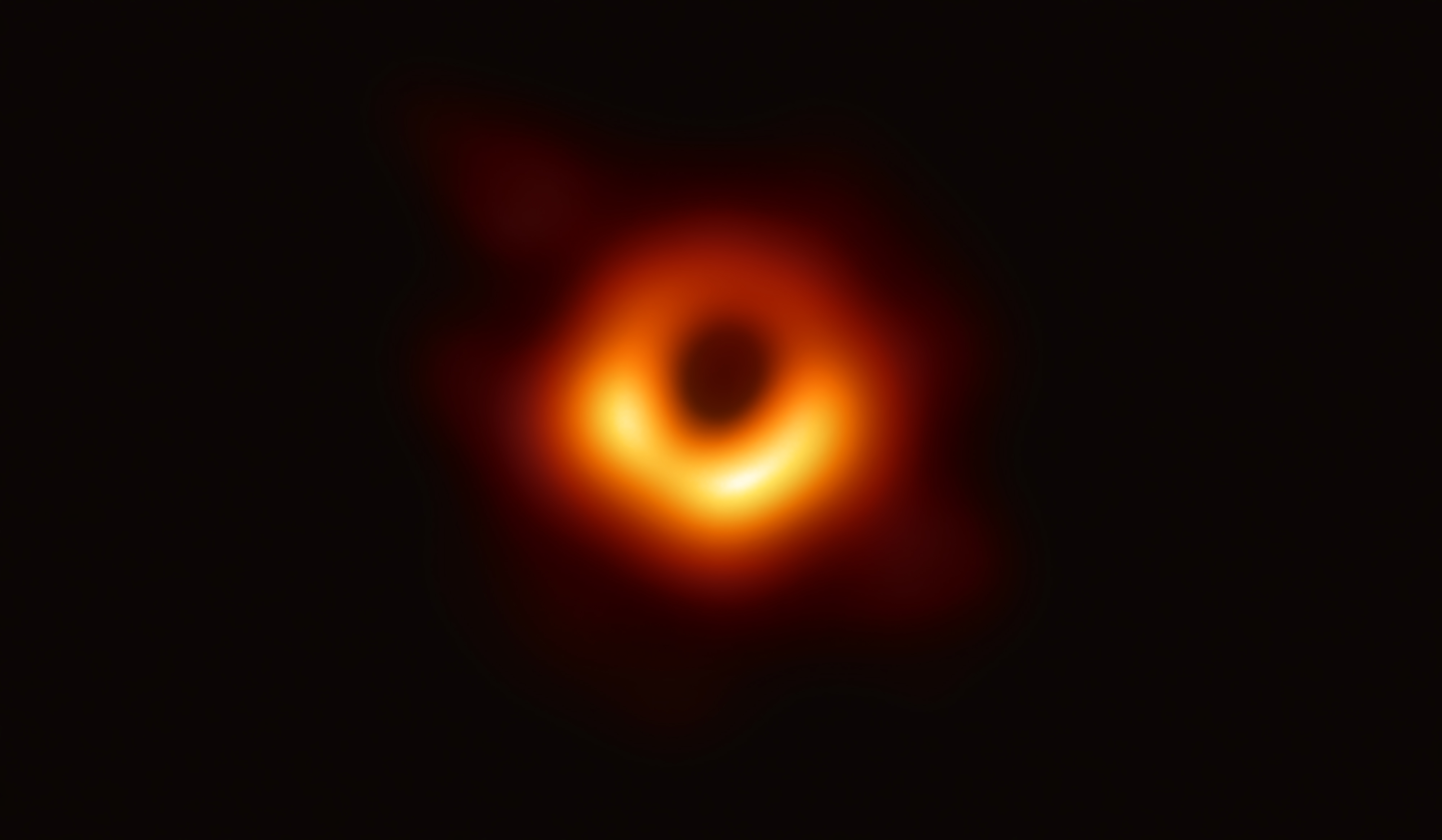
Imaging the Darkness

By Dr. Lisa Will, Resident Astronomer at the Fleet Science Center
On Wednesday, April 10, 2019, astronomers from all over the world shared an amazing new development in humanity’s exploration of outer space, the first ever image of a black hole. The image is stunning in and of itself, especially for astronomers, simply because of the subject matter. Black holes are fascinating outer space phenomenon. Yet there was also an amazing amount of hard work, international coordination, and scientific ingenuity required to make this feat possible that deserves recognition, too.
The black hole image was captured via the Event Horizon Telescope, an international collaboration of eight ground-based radio telescopes located all over the world. Through a process called interferometry, information is combined from an array of telescopes stretching from Peru, North America, Spain, Hawaii, and even Antarctica. This effectively creates a radio telescope the size of the Earth. The process of interferometry produces incredibly complex data and a lot of it. This one black hole image alone is over five petabytes of data, which is more data than can be held on over 10,000 MacBooks!
The interferometric data allowed astronomers to observe the supermassive black hole at the center of the galaxy M87, a giant elliptical galaxy located 55 billion light years away, in the constellation of Virgo. We tend to think of black holes as giant cosmic vacuums, but they are actually quite small in terms of radius. This makes them especially difficult to capture with a telescope.
To capture this image astronomers had to search for one of the most massive black holes they could find. The black hole in the image is from the center of galaxy M87. While the mass of the black hole is 6.5 billion times the mass of our Sun and the event horizon—the region surrounding the black hole from which matter can no longer escape—is the size of our solar system, that’s actually a really tiny unit of spacetime, galactically speaking. For comparison, the galaxy M87 is over 120 light years across with over a trillion stars!
The glow you see in the image is from ionized gas, called plasma, surrounding the black hole, which is a fascinating subject to explore in and of itself.
The dark gap is not the true event horizon as you might suspect, but a “shadow” or “silhouette” causes by light being pulled into the black hole’s gravity. To get an actual image of a black hole event horizon would truly be an unimaginably amazing feat of science.
Wishing you clear skies!
Follow the Event Horizon Telescope on social media for more news!
https://twitter.com/ehtelescope
https://www.facebook.com/ehtelescope/
Media Resources:
https://www.sciencemag.org/news/2019/04/black-hole
https://www.nasa.gov/mission_pages/chandra/news/black-hole-image-makes-history
